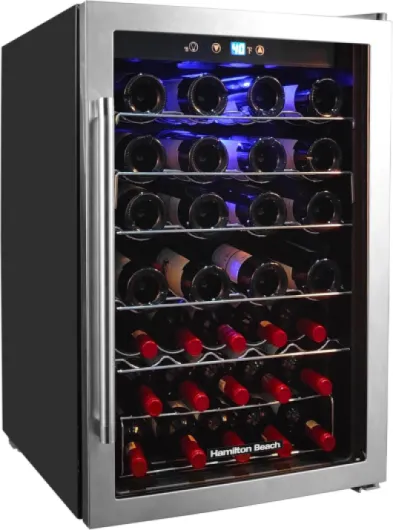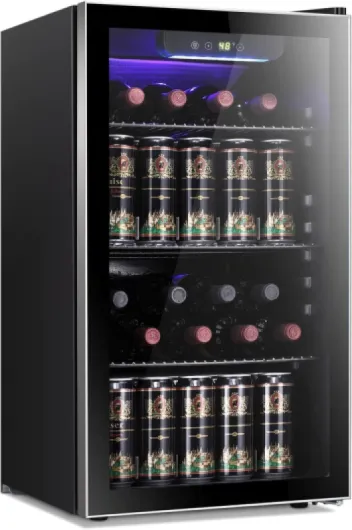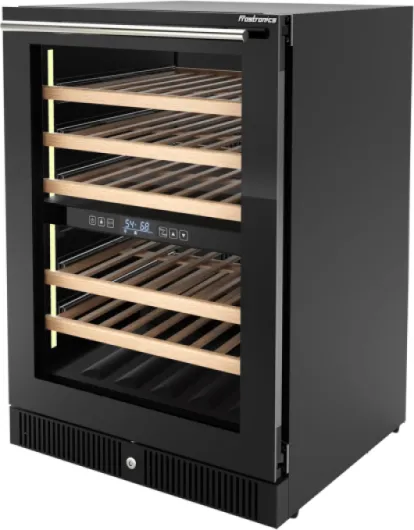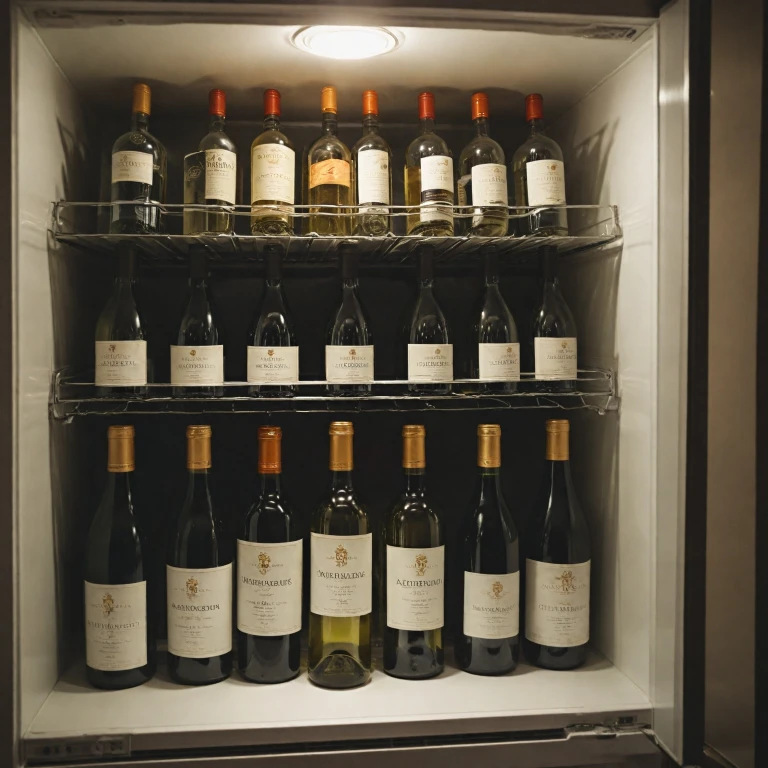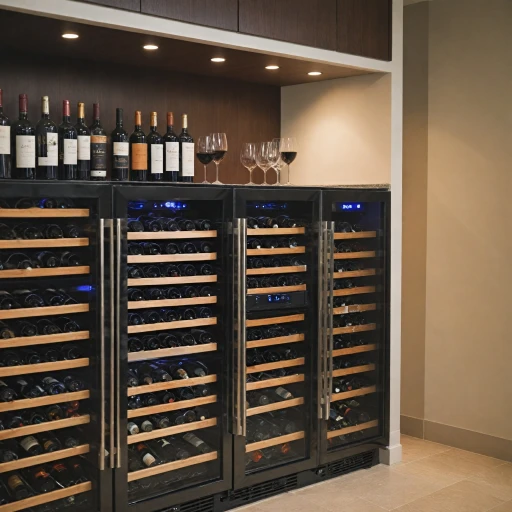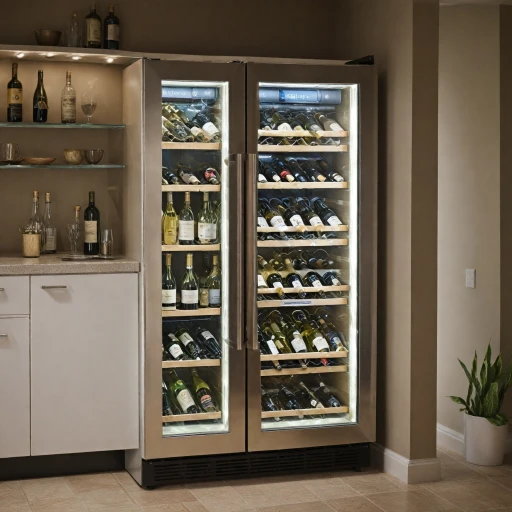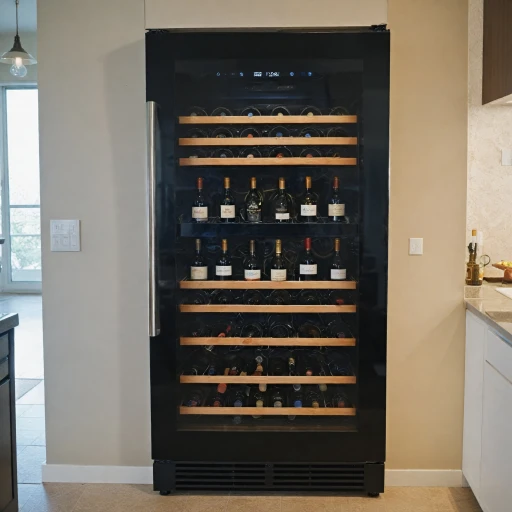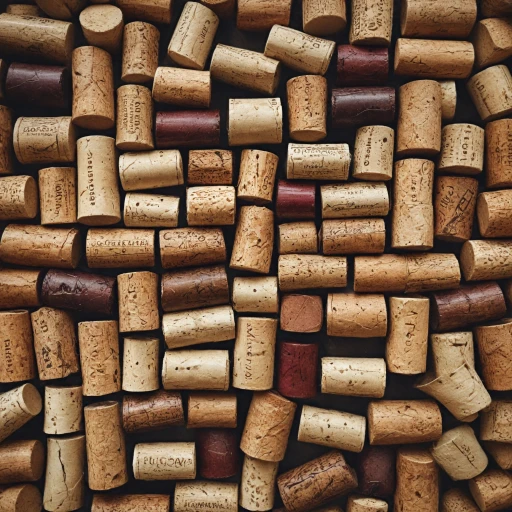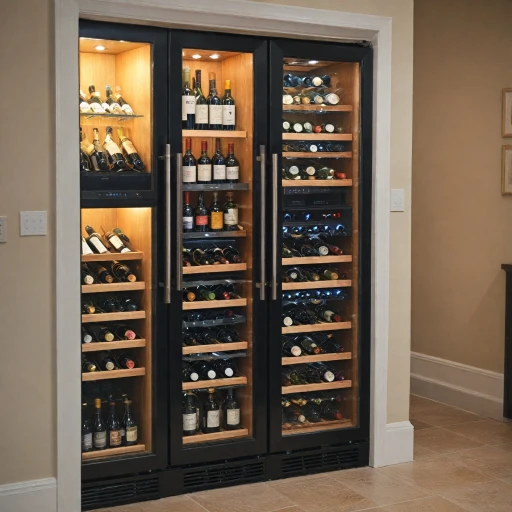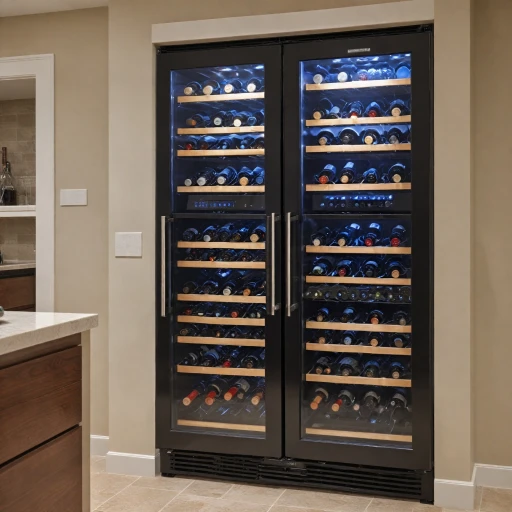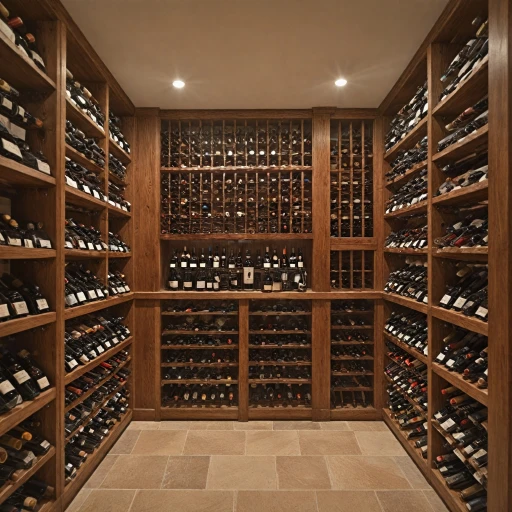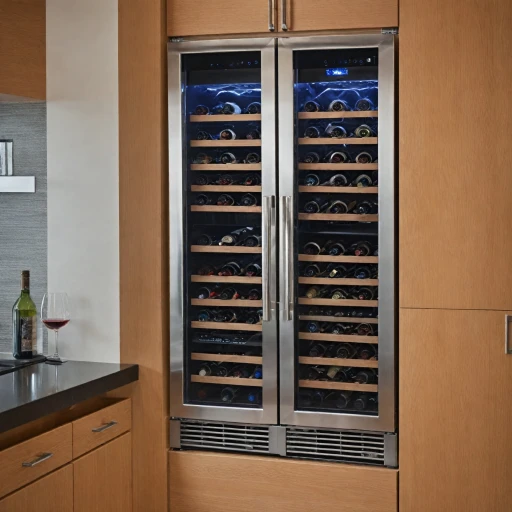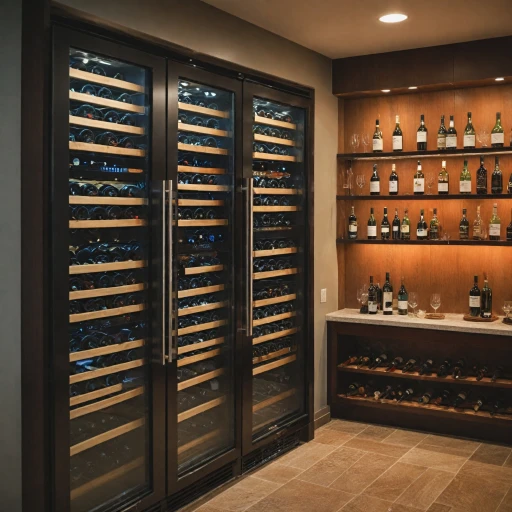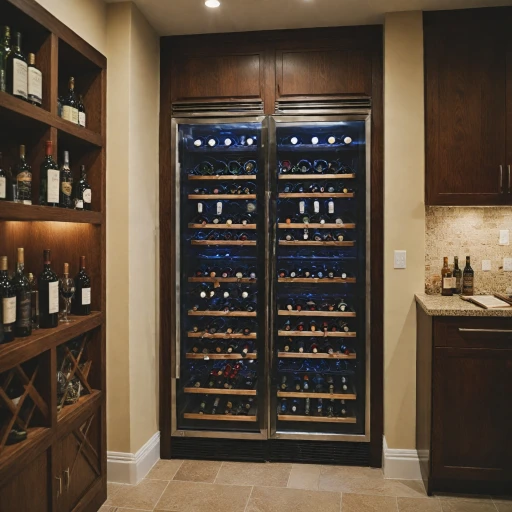
Understanding the Importance of Temperature Control
Significance of Maintaining Proper Temperature
When it comes to preserving your white wine's unique attributes, controlling the temperature at which wine is stored is crucial. Temperature variations can affect not only the flavor and aroma of your wines but also their longevity. Unlike red wines, white wines are more sensitive to light and temperature changes, making precision in your storage environment vital. White wines, such as a crisp sauvignon blanc or a delicate sparkling wine, require specific storing and serving temperature conditions to ensure they maintain their intended taste profiles.
Recognizing that the ambient environment significantly influences the character of your wine can help you make informed choices when setting up a storage system. A common temperature range for serving white wines is typically much cooler compared to red wines, and an inconsistent temperature can lead to premature aging or spoilage.
A top-notch wine fridge, or even your standard refrigerator, can be adjusted to maintain an appropriate temperature for white wine storage. The nuances between a full-bodied and light-bodied white wine also dictate slightly different storage conditions, with optimal temperatures generally ranging from 45 to 55 degrees Fahrenheit (around 7 to 13 degrees Celsius).
By understanding the critical role temperature plays in wine storage, enthusiasts can enjoy their white wines at their best, ensuring each bottle served captures the intended balance of flavors and bouquet, elevating every wine serving experience.
Ideal Temperature Range for White Wine
Finding the Sweet Spot for White Wine Temperatures
When it comes to storing white wine, ensuring that the wine is kept at the optimal temperature is crucial. For wine enthusiasts and casual drinkers alike, finding the right temperature balance can profoundly impact the flavor profiles and overall enjoyment of the wine. Typically, white wines, including popular choices like sauvignon blanc and sparkling wine, require cooler temperatures than their red counterparts. Many experts recommend storing white wine at a temperature range between 45-50 degrees Fahrenheit, or 7-10 degrees Celsius. This range is considered optimal as it helps to preserve the wine's delicate aromas and characteristics without causing any premature aging. Unlike full-bodied red wines, which can tolerate warmer temperatures due to their structure, white wines are best served at cooler conditions. Maintaining this ideal temperature in your wine fridge isn't just about storage; it's about ensuring that the wine is served in its best possible state. When a white wine is served colder than the recommended range, it can suppress the wine's flavors, making it harder to appreciate its unique notes. Conversely, if a bottle is served too warm, it can make the wine's sweetness overly pronounced, potentially throwing off its balance. In practice, you may wish to adjust your storage settings depending on the specific type and body of the white wine you're storing. For example, more full-bodied whites might do well slightly above the standard range, while lighter varieties require the cooler end. Whether you're preparing a chardonnay for dinner or chilling a bottle of rosé for a summer gathering, knowing your wine's perfect temperature can be a game-changer in wine enjoyment.Common Mistakes in White Wine Storage
Missteps That Can Ruin Your Wine
Storing white wine isn't as simple as placing it in the fridge and calling it a day. There are common mistakes that many make, affecting the quality and enjoyment of their wines.
First, don't assume all wine should be stored at the same temperature. Each style has its own optimal conditions. White wines, especially those that are full-bodied like Chardonnay, demand specific ideal temperature ranges to preserve their flavors. Ignoring these can lead to a lackluster taste when served.
Another error is storing wine in the kitchen fridge, thinking it’s sufficient. Though convenient, typical refrigerator temperatures are often too cold for proper white wine storage. This can dull the flavors and aromas, leading to a disappointing wine serving. Instead, invest in a good wine fridge to better manage the environment.
Be cautious about fluctuating temperatures. Constant changes, often occurring in traditional fridges, can hasten wine ageing and spoil its taste. Aim for stability, maintaining a consistent temperature to ensure the ideal conditions for your white wine are met.
Lastly, avoid storing white wine in bright places. Exposure to excess light, particularly UV rays, can cause unwanted chemical reactions, altering the taste and appearance of your favorite bottles. Maintaining a dark environment within your wine fridge is crucial.
For those interested in exploring how red wines are affected similarly, check out the captivating topics on red wine storage nuances.
Choosing the Right Wine Fridge
Selecting the Perfect Wine Fridge for Your Collection
When considering a wine fridge for your white wine collection, a few critical factors will ensure the optimal temperature for storing and serving. With white wine's delicate nature, temperature control is key to preserving flavors and aromas.- Capacity and Design: Depending on the size of your collection, select a wine fridge that accommodates your storage needs. Some fridges offer adjustable shelving to fit various bottle types, including larger Sauvignon Blanc or sparkling wine bottles.
- Temperature Range: Opt for a fridge that offers a range suitable for both white and red wines. This versatility allows you to keep your white wines close to their ideal serving temperature, typically between 45-50 degrees Fahrenheit (7-10 degrees Celsius). If you enjoy full-bodied whites or rosé, slight adjustments might be needed.
- Dual-Zone Features: For enthusiasts who store both reds and whites, dual-zone fridges are invaluable. They maintain separate temperature zones ideal for each type, ensuring your white wines aren't too chilled while reds are kept at their best at slightly warmer settings.
- Energy Efficiency: Look for energy-efficient models, as wine coolers run continuously to maintain a consistent fridge temperature. This is especially important for long-term storage to protect the wine's integrity.
Adjusting Your Fridge for Seasonal Changes
Adapting Your Wine Fridge for Weather Variations
Storing your wine at the ideal temperature is crucial, especially when considering seasonal changes. As temperatures fluctuate with the seasons, adjustments may be necessary to maintain the optimal conditions for your white wines.
The first consideration is the general concept of room temperature, which can vary significantly between summer and winter. This affects the internal conditions of your wine fridge, making it essential to monitor and adjust the settings accordingly. During summer, the ambient temperature rises, potentially causing the fridge to work harder. Conversely, winter may require less energy to maintain the desired temperature.
It's important to regularly check the fridge temperature settings as seasons change. White wines, including the popular sauvignon blanc, are best stored around 45 to 55 degrees Fahrenheit (7 to 13 degrees Celsius). Inconsistent temperatures can impact the flavor profile and integrity of your wines, making such adjustments vital for preserving their quality.
In some instances, particularly if your wine fridge is in a room that experiences extreme temperature shifts, you might need to consider additional insulation or a location change to minimize these effects.
Maintaining Consistent Temperature in Your Wine Fridge
Consistency is Key to Optimal Wine Storage
Maintaining a consistent temperature in your wine fridge is pivotal for preserving the quality of your wines, including both white and red varieties. Fluctuating temperatures can negatively impact the wine's aging process, potentially spoiling both full bodied and lighter bodied wines, like sauvignon blanc and sparkling wine. To ensure your collection is served at its best, you should be vigilant about your fridge temperature setting.- Wine Fridge Calibration: Periodically check the temperature settings using an accurate thermometer. This step guarantees you are storing your wines, particularly delicate white wines and rosé, at their ideal temperature, whether it's in degrees Celsius or Fahrenheit.
- Avoid Overcrowding: Overloading your wine cooler can obstruct proper airflow inside the fridge, creating temperature inconsistencies. Ensure there is adequate space between wine bottles to allow uniform cooling, especially with large collections containing both red and white wines.
- Proper Placement: Position the wine fridge away from heat sources or direct sunlight, as external factors may affect its internal temperature control. This setup is crucial to maintaining the optimal serving temperature for your wine.
- Regular Maintenance: Engage in regular inspections to prevent issues like frost buildup. Any mechanical malfunctions can lead to significant temperature deviations, impacting the storage conditions for your wines.


